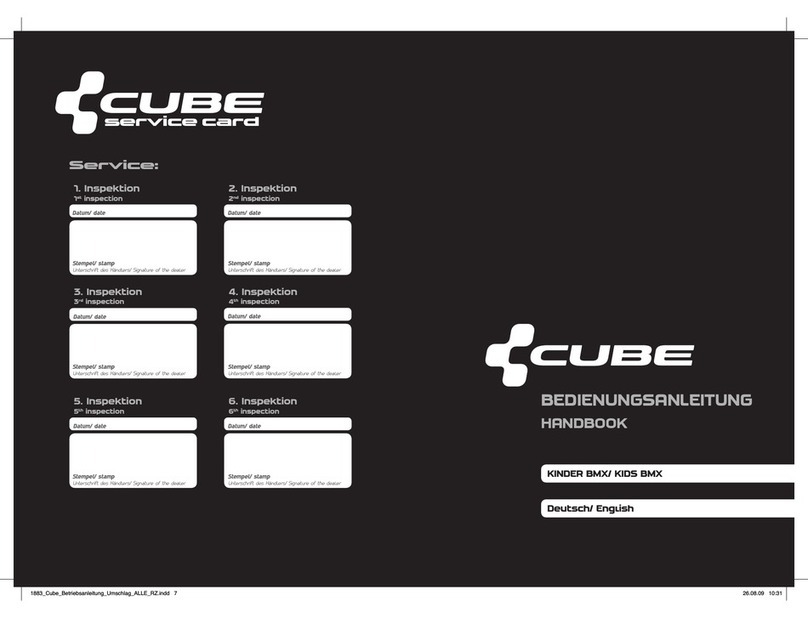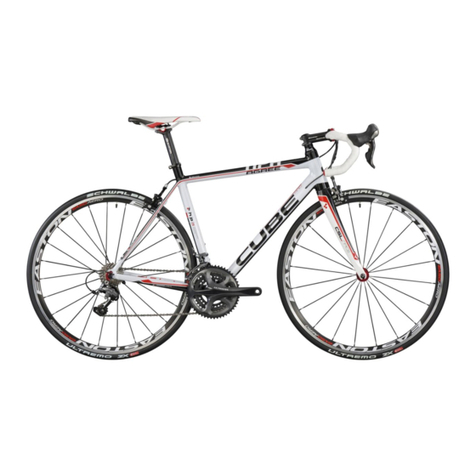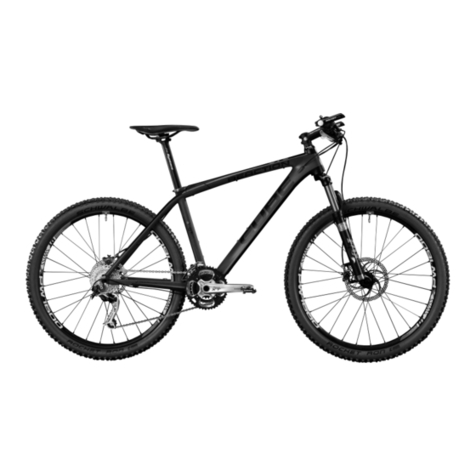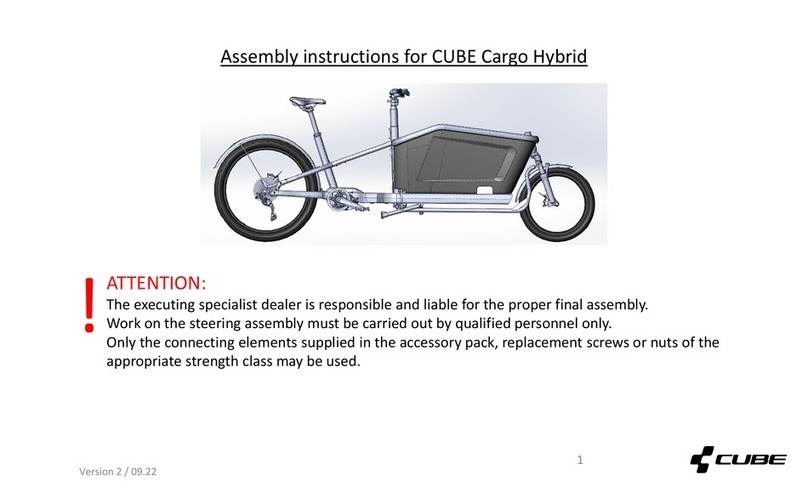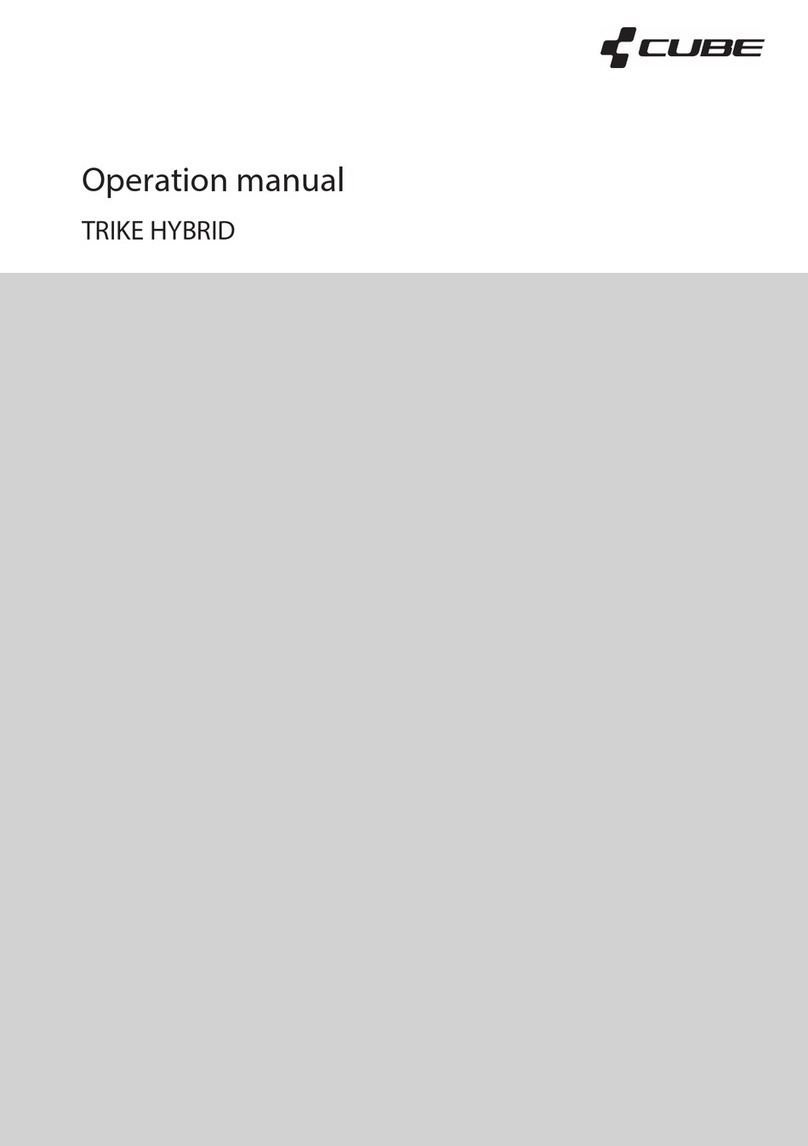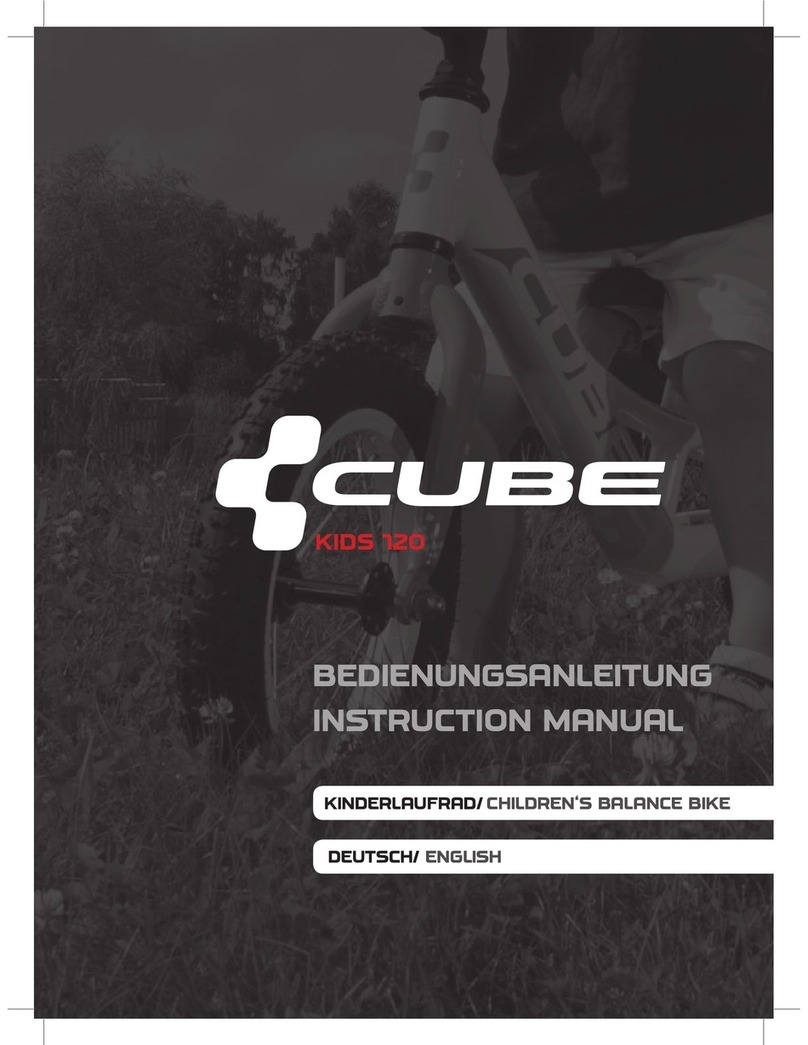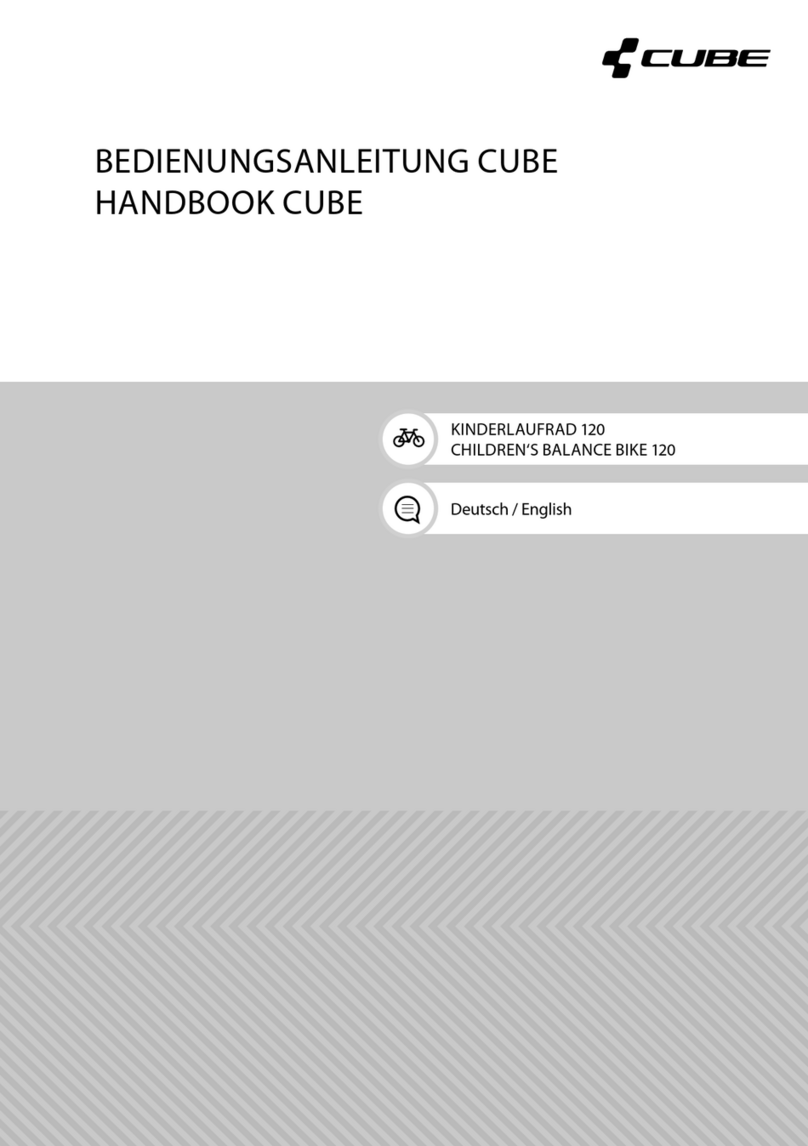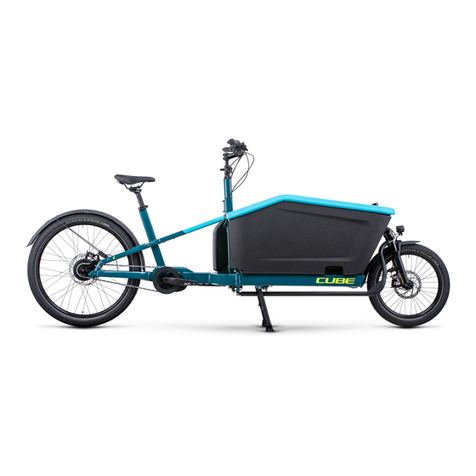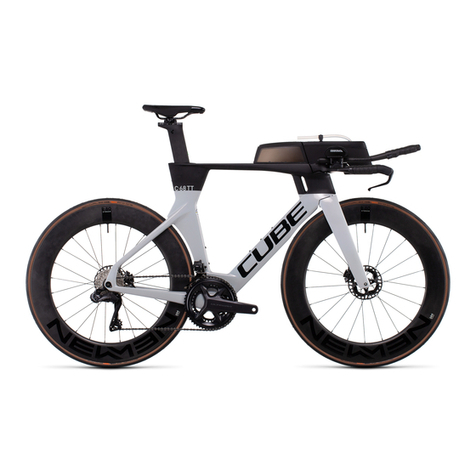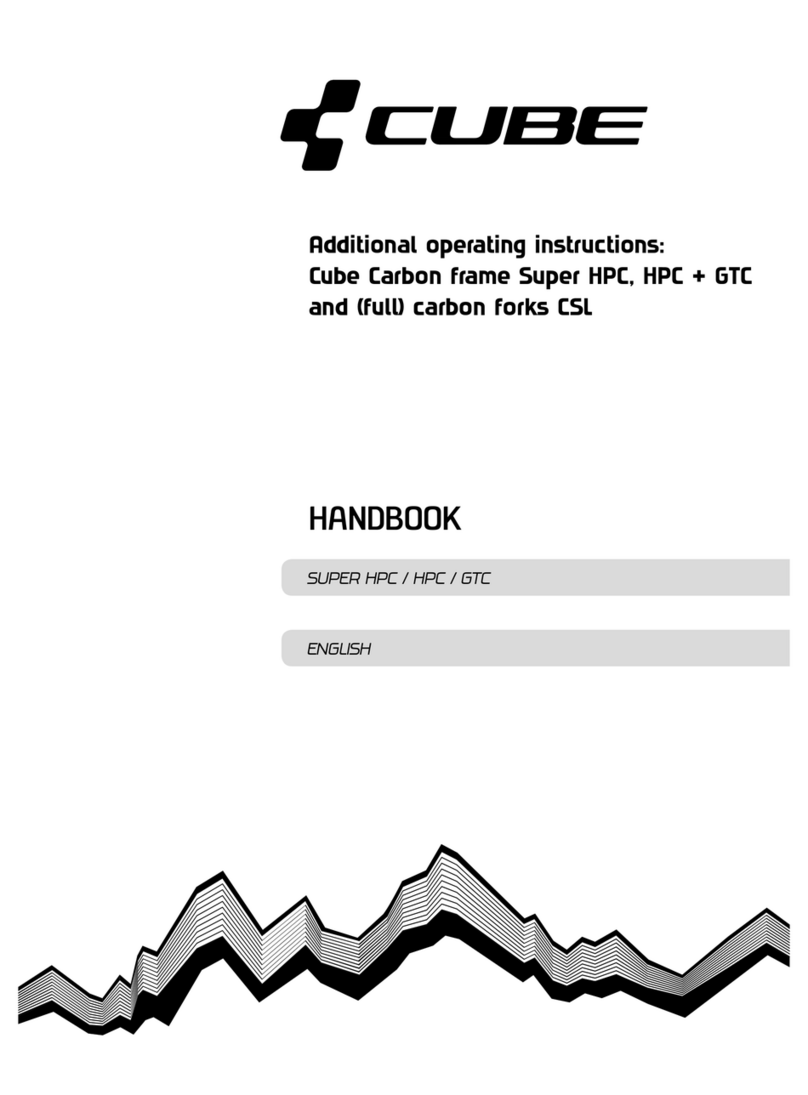8 | ROAD BIKE | EN
2.1.4 In what condition must your
bike be when you ride it?
Your new bike is an item of sports equipment and
may not be used on public roads unless equipped
to StVZO specification. In order to meet current
StVZO requirements your bike must have the
following equipment fit listed here in extract form.
Please take the full wording of the reg-
ulations for trips in Germany from the
StVZO or consult your dealer.
When using outside Germany please ob-
serve the traffic regulations prevailing
in your country. For this please consult
your dealer or the competent authority.
Two independently operating brakes
A bell
Dynamo-powered lighting for front (whitel
light) and rear (red light)
Racing bikes under 11 kg are exempt from
the dynamo regulation.
Racing bikes exempt from the dynamo
regulation must carry battery-powered
lighting in the daytime.
For the duration of participating in races
racing bikes are exempt from this regu-
lation.
White front reflector (often integrated into the
front headlight) and a red reflector at the rear
Two yellow reflectors each for the front and
rear whhels; alternatively Tyres with reflective
stripes on both sides
Two yellow reflectors for both right and left
pedals
All lighting components and reflectors
must be officially approved.
Approval can be recognised by a “K”
marking, a wavy line and a multi-dig-
it number.
For regulation fitting of these parts
please consult your dealer.
Chainwheel guard
2.1.5 What you must not do
RISK OF PERSONAL INJURY AND
MATERIAL DAMAGE!
Many cyclists like to modify their bikes
and to custom them to their particu-
lar wishes. Saddles, handlebars, pedals,
brakes, tyres and suspension elements
-there are may possibilities for changing
your bike subsequently.
Working on bikes, including work which
is assumed to be very simple, requires
sound training, sound knowledge and a
great deal of experience.
Unprofessional work on your bike can
lead to dangerous riding situations, fall-
ing, accidents and material damage.
Do not fit add-on parts to your bike
which are not expressly approved
for your model of bike.
Excepted are bike computers and
bottle holders if selected and fitted
by the dealer.
Please consult your dealer.
Have all fitting of parts, modifica-
tions, servicing and other work car-
ried out only by your dealer.
2.2 Other hazards
2.2.1 Hazards caused by faulty final
assembly
RISK OF PERSONAL INJURY AND
MATERIAL DAMAGE!
Unprofessional final assembly of this
bike can lead to dangerous riding situ-
ations, falling, accidents and material
damage
Have correct final assembly and adjust-
ment of the right seat position for you
confirmed by your dealer. Use the print-
ed form in this Owner‘s manual on.
